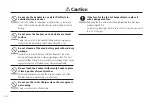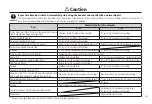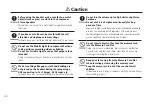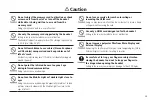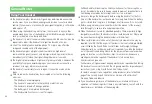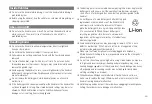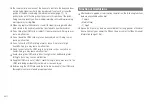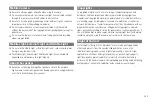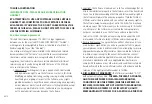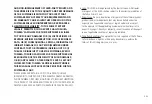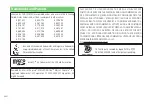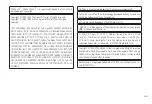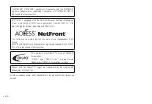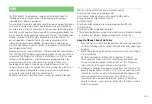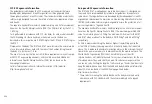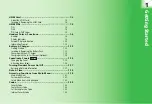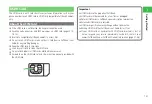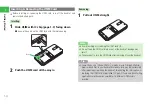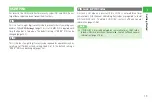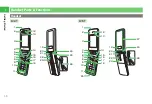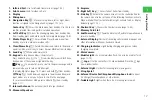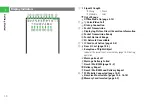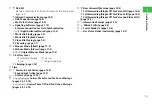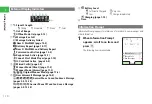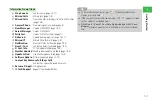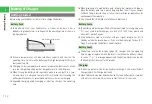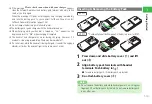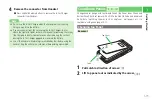
xxx
FCC RF Exposure Information
The guidelines established by the FCC are based on standards that were
developed by independent scientific organizations through periodic and
thorough evaluation of scientific studies. The standards include a substantial
safety margin designed to assure the safety of all persons, regardless of age
and health.
The exposure standard for wireless handsets employs a unit of measurement
known as the Specific Absorption Rate (SAR). The SAR limit set by the FCC is
1.6 W/kg.
Tests performed in accordance with FCC standards for each model show that
the SAR readings for these handsets, when used next to the body as
described in this user guide, are 0.879 W/kg for the 814T and 0.914 W/kg for
the 815T.
Placement on the body: The 814T and 815T were tested in the normal mode
of use for mobile phones, held with the rear of the handset facing towards
the body at a distance of 1.5 cm.
The use of accessories that do not satisfy these requirements may not comply
with FCC RF exposure requirements, and should be avoided. Additional
information on Specific Absorption Rates (SAR) can be found on the
homepage listed below:
Cellular Telecommunications & Internet Association (CTIA) website:
http://www.phonefacts.net
European RF Exposure Information
The 814T and 815T mobile phones are radio transceivers. It is designed not
to exceed limits recommended by international guidelines for exposure to
radio waves. These guidelines were developed by the independent scientific
organization International Commission on Non-Ionizing Radiation Protection
(ICNIRP) and include safety margins designed to assure the protection of all
persons, regardless of age and health.
The exposure standard for wireless handsets employs a unit of measurement
known as the Specific Absorption Rate (SAR). The maximum permitted SAR
value for a mobile phone is 2 W/kg. The maximum SAR values for the 814T
and 815T when used next to the body are 0.519 W/kg* and 0.563 W/kg*
respectively.
As SAR is measured utilizing the device's highest transmitting power the
actual SAR of this device during operation is typically below that indicated
above. This is because the handset was designed to use the minimum level of
transmission power necessary to communicate with the mobile network. The
World Health Organization (WHO) has stated that present scientific
information does not indicate the need for any special precautions for the use
of mobile devices. They note that if you want to reduce your exposure then
you can do so by limiting the length of calls or using a "hands-free" device to
keep the mobile phone away from the head and body. Additional information
about SAR can be found at the WHO homepage listed below.
http://www.who.int/emf
* These tests for wearing the mobile device on the body are carried out in
accordance with FCC standards and the values are based on European
requirements.
Содержание 814T
Страница 3: ...iii...
Страница 32: ...1 2 1 Getting Started...
Страница 66: ...2 14 2 Basic Operations...
Страница 130: ...6 26 6 Camera...
Страница 186: ...11 18 11 Settings...
Страница 196: ...12 10 12 Security Settings...
Страница 254: ...14 10 14 Optional Services...
Страница 320: ...18 18 18 Communications...
Страница 338: ...20 10 20 S FeliCa...
Страница 356: ...21 18 21 Appendix AC Charger Input Voltage 100 to 240 V AC 50 60 Hz Charging Temperature Range 5 to 35 C...

